Switzerland is German French and Italian tooPrepared by Harold Stephens
Travel Correspondent for Thai Airways International
Many thoughts come to mind at the mention of Switzerland: Rolex watches, Swiss banks, snow-capped mountain peaks, alpine villages, and, of course, mountain climbing and skiing. You might even throw in yodelling and Swiss cheese.
But one hardly ever associates Switzerland with a Mediterranean climate, Italian architecture (and food) and a Riviera lifestyle. What might come as a surprise to many travellers is that all of these things—a mild climate, Italian architecture and cuisine and a Riviera style of living— are part of Switzerland, the southern part, that is. But a word of caution: don’t call a Swiss person from southern Switzerland an Italian. I was corrected when I did. “I may speak Italian,” he said, half scolding me, “but I am Swiss.” I never forgot.
Nevertheless, we all love Switzerland or, at least, are fascinated with Switzerland. We read that many of the world's rich and famous either live in Switzerland or have second homes there, and we may have wondered, why Switzerland? What was the attraction for such “have-alls” as Charlie Chaplin, Ava Gardner, Alfred Nobel and so many more? Do Alpine villages hold such fascinations? Or is it something else?
No, the rich and famous choose Switzerland for reasons other than an invigorating climate and good skiing. All you need to do to find their secret is to travel by train south from Zurich and cross over the St. Gothard Pass until you reach Ticino, the southernmost district, or canton as they call it there.
Here, in Ticino Canton, is where Switzerland meets Italy in a Mediterranean setting. Here, long before the mountain passes were ever opened to traffic, the Romans came and built their amphitheatres and baths, followed later by thinkers and poets like Jean-Jacques Rousseau and Lord Bryon. The words of Lord Byron ring so true: “Where under the pinnacles of the Rocheras-de Nay, fields of wild narcissi splash the grassy slopes with splendour.”
Rousseau awoke Europe to the beauty of Southern Switzerland with his romantic novel Julie, published in 1761. Then came the restless traveller, Lord Byron. He was so inspired half a century later—“My Soul is drunk with the view of Nature”—that he expressed his feelings in the epic Childe Harold’s Pilgrimage, a classic of English Romantic literature.
Today the traveller has a far greater opportunity to get “his soul drunk” in southern Switzerland than visitors did in the past. Up until 1882, mountain passes into Ticino remained closed during the long winters. That year the completion of the St. Gothard railway tunnel made it possible for the canton to keep in contact with the rest of the country all year round.
Ticino today has been adopted not only by the rich and famous but also by artists, men of letters and scientists as well—win the Nobel and you, too, can move to southern Switzerland, with the others. Once you cross the Alps and drop down into the valley you’ll understand why. From wild mountain alpine landscapes to gentle lake scenes, from wild streams rushing through gorges to serene placid rivers, from pine and fir to palms and tropical shrubs. Rousseau and Byron were right.
But don't misunderstand. Ticino is still Switzerland. It has been described by scholars as being Swiss in mentality, order and hospitality; and at the same time, Italian in language, architecture and temperament; and with it Latin joie de vivre. Indeed, the cafes are lively, the pizzas and pasta excellent and the wine superb; and, being Switzerland, there is order.
Ticino serves as gateway to Italy. Here, high in the St. Gothard massif, two great European rivers, the Rhine and the Rhone, start to flow, in opposite directions.
From Zurich it’s a pleasant, and delightful, four-hour train journey to Bellinzona, the capital of Ticino. The town appears suddenly, just as the train comes out of the mountains and drops into the valley of Ticino. Bellinzona also comes as a surprise. It remains a true mediaeval town.
Leave the train and begin walking and you find yourself in the 14th century. Streets are narrow and made of stone. At every turn new discoveries await: castles (there are three), ramparts, embrasures and crenelled walls, portcullises—all testify to a great past that makes you eager to find a quiet cafe and begin reading your guidebook. The cafe is easy to find, but reading is something else. Distractions are many
The symbols of Bellinzona are the two towers of Castle Grandetorre Bianca (white tower) and Torre Negra (black tower). The castle is believed to be of Roman origin. It is mentioned in the account of an armed battle that occurred in 690 AD.
A little south of Bellinzona the rail line splits. To the west is Locarno; to the East, Lugano. Both towns are a must, and staging points for other adventures in the valley.
Locarno is a reminder of the French Riviera. Located on the northern bank of Lake Maggiore, it’s difficult to discern where the town begins and ends, for the entire coastline is a collection of picturesque villages, all nestled in hillsides reaching down to the water’s edge.
The Visconti Castle is among the most noteworthy buildings in town and shows the strong influence of elegant Lombard architecture. Another imposing site is the Sanctuary of the Madonna del Sasso high up on a rocky promontory overlooking the city. It dates back to 1487 and offers a splendid new of the lake and town. The Sanctuary is visited by cable railway which leaves from Via Ramogna near the railroad station.
Ascona, the nearest town to Locarno, was once a small fishing village but is now home for artists, writers and cultural escapees. It has the imprint of elegance and style.
From both Locarno and Ascona, ferries depart for cruises on Lake Maggiore. A fifteen minute voyage takes you to Bissago Island, a kidney shaped island about the size of a couple of city blocks. The island has an impressive villa that houses a museum and a magnificent view of the coastline. Other than the villa, Bissago is noted for two things: its botanical garden with plants from the entire continent and its legend. The legend concerns the man who once owned the island and built the villa and who had an eye for young ladies.
In Ticino it’s an argument which is more alluring, Locarno or Lugano. Don’t make any quick judgments. Both are special. And both have more than scenic beauty, history and legends. They have the arts, musical concerts, painting exhibitions and theatrical performances as well as parades and village festivals. And, of course, there are nightclubs and discos, and the Casino of Campione in Lugano.
To visit some really remote villages there is helicopter service. I made the flight to Gordevio. The helicopter lifted up from the tiny airport near Locarno, then rose high above the town and the Madonna del Sasso Sanctuary to Gordevio, a true mountain village. I arrived in time for lunch, cooked in traditional mountain style, in wood burning ovens and on open fires.
The meal—a better word would be feast—is of the kind you read about in novels or see in the movies but never really experience. I sat with the other guests at long plank tables. Our carpet was green grass and our overhead cover was spreading shade trees.
From wood burning ovens came the aroma of baking bread, and from heavy iron pots resting on grates over open fires came the pungent smell of garlic simmering in butter. Men, who did the cooking, stirred the contents with long handle wooden ladles while women tended the ovens.
And while this was happening, lasses in peasant dresses carted flagons of red and white wine to the tables, wine fermented from their own vineyards. A jolly, rotund Swiss musician—wearing leather shorts held up by bright red suspenders—walked among the tables playing an accordion. He stopped now and then to have a toast of wine with the guests and with each lingering stop his music grew livelier. The Swiss guests, moved by the flow of wine and music, swayed back and forth and sang aloud, Italian and German songs that reverberated through the valley.
Finally the food arrived.
The piece de resistance, after the main course, was pizza baked in the wood burning ovens on huge slabs of iron. Never again will I have pizza that tasted better than the pizza cooked at Gratto Amatutz in the Italian Swiss mountains.
This is but one village in Ticino. Gazetteers reveal the canton has some 250 small towns or villages of which more than half have less than 500 inhabitants while 40 have less than a hundred. The smallest, Lagario, claims fifteen. But it has a restaurant.
For certain, each village will have a church and most churches have frescoes representing the early Christian influence in Europe. The most beautiful fresco is in the small Romanesque church in San Virgilio.
The finest church treasures are preserved in Santa Maria del Campione, which dates back to the 14th century. The Romanesque church of Biasca in Lavizzara Valley dates back even further to the 11th century. If one wanted to visit all the churches in Ticino, it would take weeks.
The town of Melide, situated at the end of a long bridge that stretches between the two banks of Lake Lugano, is the site of the famous “Swiss Miniature” village. Here one can see actual small-scale models of more than 100 characteristic buildings from all over Switzerland.
Some towns like Ganrida are sculptured works of art. Built on a steep mountain slope at the end of a lake, Ganrida too was once an old fishing village. It has flower-laden terraces, red tile roofs and whitewashed walls.
And for the rail buff, the railway that runs through Centovalli is one of the most spectacular in Switzerland.
But I don’t want to be misleading. You don't have to be rich or famous, nor a travel writer, to travel to southern Switzerland and enjoy it. Records show that nearly four million foreign tourists visit Ticino each year, and certainly they can't all be rich and famous. Ticino boasts 750 hotels with 27,600 beds and another 9,000 beds in holiday flats and houses. Also, there are camping sites. The methodical Swiss can tell you that the canton receives more hours of sunshine than anywhere else in Switzerland––with an average of 2,187.3 hours a year. That’s the Swiss for you, exact details.
Next week, with gasoline prices falling, this is a good time to rent a car in Los Angles to see Southern California from behind the drivers’ wheel. We will take a drive up Highway 101.
QUESTIONS & ANSWERSQ. Dear Mr. Stephens, This email is in regards to the origin of The Sarkies Brothers in your article titled: The Strand Hotel – The Grand old Lady Of Yangon for Royal Orchid Holidays Weekly Travel Feature.
My name is Martin S. Bambanian. I am the great-grandson of Martin Sarkies. I wanted to bring to your attention that the Sarkies Brothers were from New Julfa, an Armenian quarter of Isfahan, Iran. New Julfa was established in 1606 by Shah Abbas for Armenians that were moved from Julfa.
Please consider correcting the article online where it states that the brothers were from Armenia. Thank you. Respectfully, Martin Bambanian, Los Angeles, CA
Q. Dear Mr. Stephens, This email is in regards to the origin of The Sarkies Brothers in your article titled: The Strand Hotel – The Grand old Lady Of Yangon for Royal Orchid Holidays Weekly Travel Feature.
My name is Martin S. Bambanian. I am the great-grandson of Martin Sarkies. I wanted to bring to your attention that the Sarkies Brothers were from New Julfa, an Armenian quarter of Isfahan, Iran. New Julfa was established in 1606 by Shah Abbas for Armenians that were moved from Julfa.
Please consider correcting the article online where it states that the brothers were from Armenia. Thank you. Respectfully, Martin Bambanian, Los Angeles, CA
A. Dear Mr. Bambanian, Thank you for your email. I will make the correction in my coming Royal Orchid Holidays feature by printing your letter. I have been fascinated by the Sarkies Brothers for as long as I can remember and have written about them often. They are certainly an interesting family. However, there are conflicting stories about their background and I am glad you cleared that up. Thank you again. ––HS
Harold Stephens
Bangkok
E-mail: ROH Weekly Travel (booking@inet.co.th)
Note: The article is the personal view of the writer and does not necessarily reflect the view of Thai Airways International Public Company Limited. | 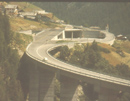
Nowhere are roadways more exciting than Switzerland | | 
Yes, still goats in Switzerland | | 
Where women wear lovely hats | | 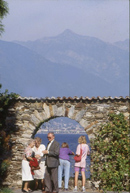
Some of the best views are in the Alps | | 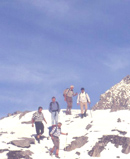
How about a short hike before lunch ? | | 
The author smiling for the cameraman | | 
Swiss have their own brand of music | | 
Take the helicopter to fine restaurants in the hills | | 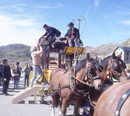
They even have stagecoaches | | 
Dining out in the open air | | 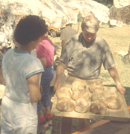
Fresh baked bread for the guests | | 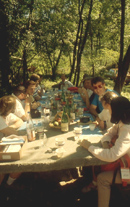
In the Alps one dines outdoors | | 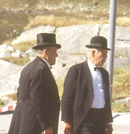
Men dress for the occasion too | | 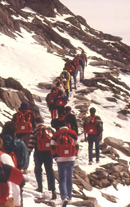
A stroll means climb a mountain | | 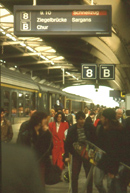
From Zurich take the train | | 
You can¹t get lost | | 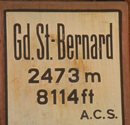
The most famous pass in Europe | | 
Insight Guide to getting around | | 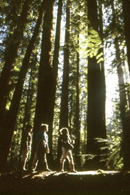
Next week we drive Highway 101 in California |
|





